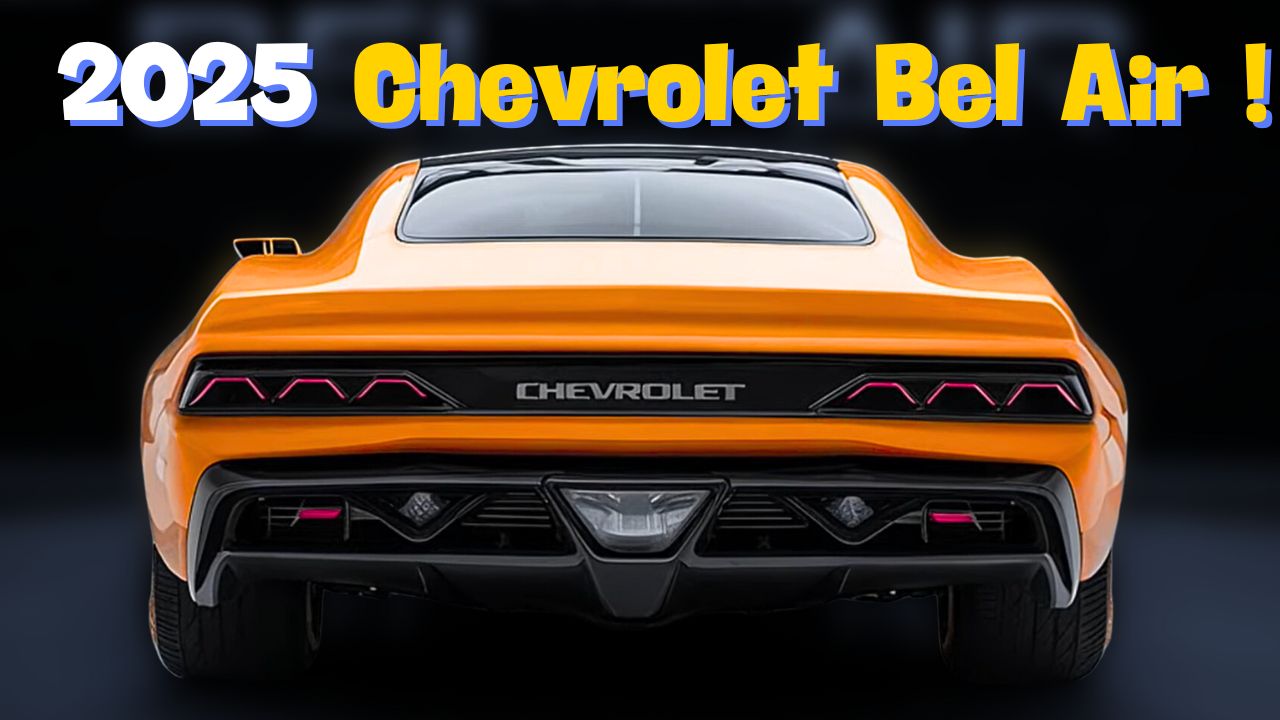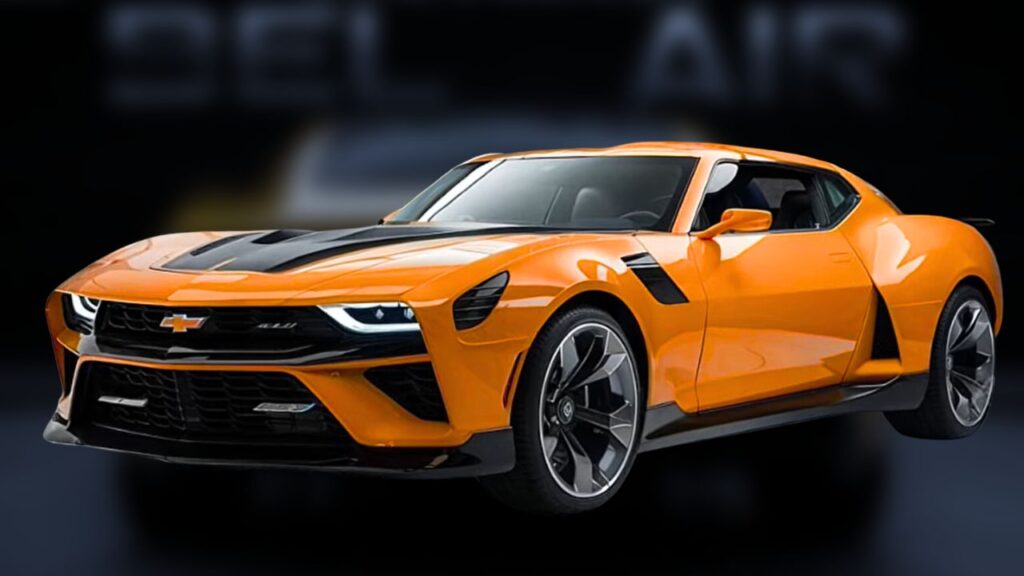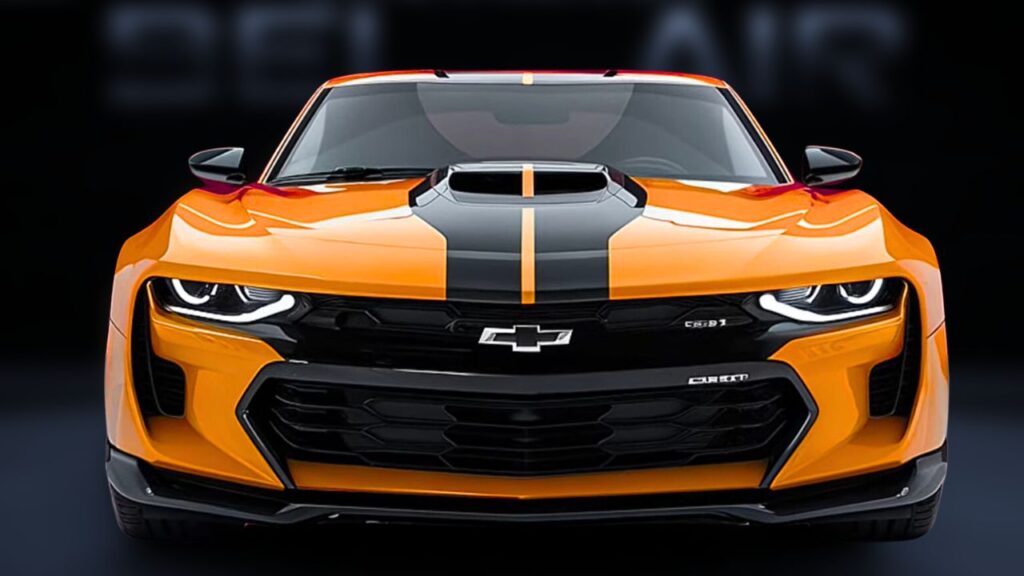
The 2025 Bel Air: A Look at Potential Cost and Features
The Chevrolet Bel Air, a name synonymous with American automotive history, has enjoyed a long and storied past. From its humble beginnings in 1950 as a trim level on the Chevrolet line, the Bel Air rose to become a cultural icon, representing the American dream of mobility and style. While the Bel Air name has been absent from Chevrolet’s lineup for decades, there’s a growing buzz about its potential return in the coming years.
Speculation abounds regarding a 2025 Bel Air revival, fueled by the increasing popularity of retro-inspired vehicles and Chevrolet’s commitment to expanding its electric vehicle (EV) portfolio. But what can we expect from a 2025 Bel Air in terms of cost and features? Let’s dive into the possibilities.
A Modern Take on a Classic:
The 2025 Bel Air, if it comes to fruition, is likely to be a modern interpretation of the iconic nameplate. While it may borrow styling cues from its predecessors, it will undoubtedly incorporate cutting-edge technology and features expected of a contemporary vehicle.
The Electric Factor:
The most significant factor influencing the 2025 Bel Air’s cost and features is its anticipated powertrain. With Chevrolet’s commitment to electrifying its lineup, it’s highly probable that the Bel Air will be an EV. This brings several advantages:
- Cost-effective: Electric motors are simpler and have fewer moving parts than traditional gasoline engines, potentially leading to lower production costs.
- Environmentally friendly: EVs produce zero tailpipe emissions, making them a more sustainable choice for the future.
- Performance potential: Electric motors deliver instant torque, offering a thrilling driving experience.
However, the shift to electric power also brings challenges:
- Battery cost: Lithium-ion batteries, the current standard for EVs, are expensive to manufacture.
- Charging infrastructure: While charging infrastructure is rapidly expanding, it’s still not as ubiquitous as gas stations.
- Range anxiety: The limited range of current EVs compared to gasoline vehicles is a concern for many consumers.
Estimating the Cost:
Predicting the exact cost of a 2025 Bel Air is impossible without official confirmation from Chevrolet. However, we can analyze current market trends and competitor pricing to estimate a potential range:
- Base Model: Considering Chevrolet’s commitment to making EVs more accessible, a base model 2025 Bel Air could start around $40,000. This would position it competitively with other entry-level EVs like the Chevrolet Bolt and the Hyundai Kona Electric.
- Mid-Range Model: A mid-range Bel Air, offering more features and possibly a larger battery pack, could fall in the $50,000 to $60,000 price range. This would put it in direct competition with vehicles like the Tesla Model 3 and the Ford Mustang Mach-E.
- High-Performance Model: A high-performance Bel Air, possibly with a dual-motor setup and a larger battery, could reach $70,000 or more. This would be a direct rival to the Tesla Model S and the Lucid Air.
Potential Features:
The 2025 Bel Air is likely to boast a host of modern features, including:
- Advanced Driver-Assistance Systems (ADAS): Features like adaptive cruise control, lane departure warning, automatic emergency braking, and blind spot monitoring are expected to be standard.
- Infotainment System: A large touchscreen display with intuitive software, wireless smartphone connectivity, and integrated navigation will likely be a key feature.
- Over-the-Air Updates: Like most modern EVs, the Bel Air could receive software updates wirelessly, allowing for continuous improvement and new feature additions.
- Regenerative Braking: This technology captures energy during braking and uses it to recharge the battery, extending range and improving efficiency.
- Solar Roof: A solar panel integrated into the roof could contribute to charging the battery, further reducing reliance on the grid.
- Interior Design: The interior is likely to be modern and spacious, with comfortable seating and high-quality materials.
The Impact of the 2025 Bel Air:
The potential return of the Bel Air nameplate is significant for several reasons:
- Reviving a Legacy: Bringing back the Bel Air would tap into the nostalgia and brand recognition associated with this iconic name, attracting a loyal customer base.
- Expanding the EV Market: The Bel Air could help broaden the appeal of EVs to a wider audience, attracting buyers who are unfamiliar with electric vehicles.
- Strengthening Chevrolet’s Brand: A successful Bel Air revival would strengthen Chevrolet’s position as a leader in the automotive industry, demonstrating its commitment to innovation and sustainability.
Conclusion:
The 2025 Bel Air remains a speculative concept, but its potential is undeniable. If Chevrolet decides to bring back this iconic nameplate, it has the opportunity to create a compelling EV that combines classic styling with modern technology. While the final cost and features are yet to be revealed, the 2025 Bel Air could be a game-changer for both Chevrolet and the electric vehicle market.
Further Considerations:
- Competition: The 2025 Bel Air will face stiff competition from established EV players like Tesla, Ford, and Hyundai, as well as emerging brands like Rivian and Lucid.
- Battery Technology: The future of the 2025 Bel Air hinges on advancements in battery technology. Improvements in battery capacity, charging speed, and cost will significantly impact its performance and price.
- Consumer Demand: Ultimately, the success of the 2025 Bel Air depends on consumer demand. Will buyers be willing to embrace a modern interpretation of a classic nameplate, especially if it’s an electric vehicle?
Only time will tell if the 2025 Bel Air will become a reality. However, the potential for this iconic nameplate to make a triumphant return, redefining the American automotive landscape, is undeniable.







